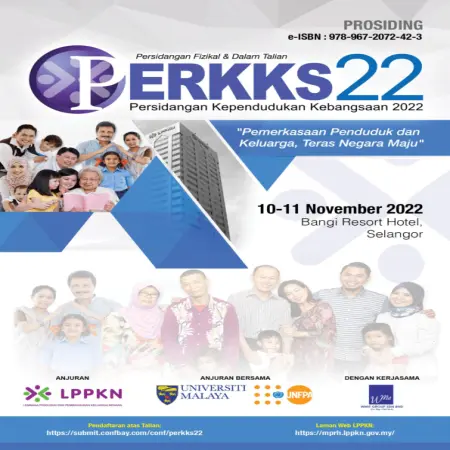| Item type |
Book Section |
| Subjects |
300 Social sciences |
| Division/Agency |
LPPKN - National Population and Family Development Board, Malaysia: Population and Family Research Division |
| Keywords |
Fertility rate, Lee-Carter model, Fertility prediction |
| Additional Information |
This paper has been presented at the National Population Conference 2022 (PERKKS 22) – Bangi Resort Hotel, Selangor on 10-11 November 2022. It is jointly organized by the National Population and Family Development Board (LPPKN), United Nations Population Fund (UNFPA) Malaysia, Faculty of Business and Economics, Universiti Malaya (UM) in collaboration with WMIT Group Sdn Bhd.
For more info, please contact:
Norkhairunnisa Redzwan
Jabatan Sains Matematik, Fakulti Sains dan Teknologi,
Universiti Kebangsaan Malaysia, 43600 Bangi, Selangor, Malaysia
Email: p105919@siswa.ukm.edu.my |
| Abstract |
Population ageing is facing by most countries today. This issues is influenced by factors such as increased life expectancy, migration and decreased fertility rates. The optimal fertility rate is 2.1 which means the average birth rate for a woman is able to replace herself and her partner. However, Malaysia has recorded a worrying situation since 2013 when the total fertility in the country was below 2.1, which is below the global fertility rate. A low fertility rate will increase the old-age dependency ratio and in turn affect the country’s economic growth. This study aims to analyze the pattern and forecast of fertility rates in Malaysia for the years 2001 to 2016 by using Lee-Carter model. |





